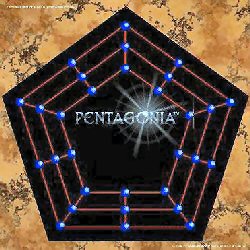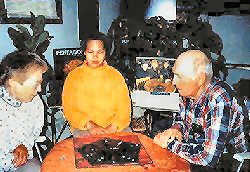
This commercial row game was manufactured in Canada and donated to the Museum in 1998. The game is based on a number of earlier row games - but is played on a pentagon. The manufacturer indicates that the roots of the game are in Tic-Tac-Toe (Naughts and Crosses and Three Men's Morris), Nine Men's Morris, and Twelve Men's Morris.
The manufacturer states that Nine Men's Morris has been around for at least 3500 years, and there is evidence it was played in ancient Egypt, Bronze-Age Ireland, Troy, Viking Norway and by members of the Zuni, Tewa, Tigua and Kere Amerindian tribes of the south-western United States. This game is also referred to in the Talmud.
Depending on location, Nine Men's Morris came to be known by a number of alternate names: Mill or Nine Men's Morris in England, Mérelles in France, Mühle in Germany, Linea in Italy, Molenspel in Holland, Tanc in Romania, and Yih in China. Twelve Men's Morris a successor game to Nine Men's Morris was popular among the courts of medieval Europe.

According to the manufacturer, while each of these games enjoy recurrent periods of popularity, those who are familiar with them know that in these games the player who makes the first move has a decided advantage. This has been corrected in Pentagonia by the alteration of the playing board, and substantial rule modifications. In Pentagonia it really doesn't matter whether you are the first or second player to place a game piece on the board. You'll win if your strategy is superior, you think more moves ahead and you have fewer play errors. In this respect, Pentagonia is chess-like. On the other hand, the game is easier to learn than chess, since the game pieces are identical. In Pentagonia the value of a piece lies not in its identity, but in the position of the piece on the game board. Game play consists of evaluating where a piece is best placed or moved to, and if and when the opportunity arises, which of the opponent's game pieces is best removed.
Last update March 31, 2010